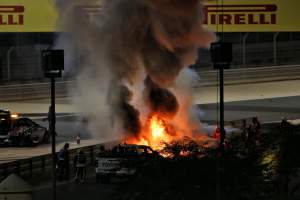Up Next

Some time over an hour after the accident, there was a race and Lewis Hamilton won it, kept on his toes by a tenacious Max Verstappen.
But that’s not what Sunday in Bahrain will be remembered for.
The accident was like something from a disaster movie – and a reminder that Formula 1 is intrinsically a dangerous activity. An instant ball of flame as Romain Grosjean’s Haas hit the metal barriers at 137mph – the front of the car punching through the gap in the metal, the halo forcing the layers apart and in so doing saving the driver’s life.
As the Haas had hit at an angle and the nose became embedded in the barriers, the car tried to pivot around that stationary front and the rear was wrenched off from behind the cockpit.
The fireball engulfed the survival cell, and Grosjean, his vision obscured through a melted visor amid the flame and smoke, somehow climbed through the gap between the halo and the remains of the barrier.
FIA medical delegate Dr Ian Roberts was on hand from the medical car to aid him away, limping. For a few seconds – just over 26 of them – everyone had feared the worst as Grosjean had remained in the flames.
When he eventually emerged he was missing one of his shoes, probably explaining part of the delay. Miraculously he suffered only burns to his hands.
It was quite the most frightening-looking scene to have unfolded in F1 in the last 30 years.
It happened within seconds of the start. Bahrain induces one of the highest fuel consumptions on the calendar and the cars will all have been loaded with close to their maximum tank capacity, probably even pressurised in some cases.
The working theory is that the force of the impact flipped off the filler hatch (which was missing afterwards) and it was escaped fuel from this which ignited over something hot.
A doubtless horrified Grosjean had just enough time to stand on the brakes. Thick black tyre lines led up to the impact scene
A few seconds later the fire then consumed the ERS battery – hence the sudden plume of jet-black electrical fire smoke a few seconds after the initial conflagration.
“We had a fuel fire,” observed F1 chief Ross Brawn, “which is something which we haven’t had for a very long time.
“The fuel cells are incredibly strong. I suspect that came from a ruptured connection but I honestly don’t know.
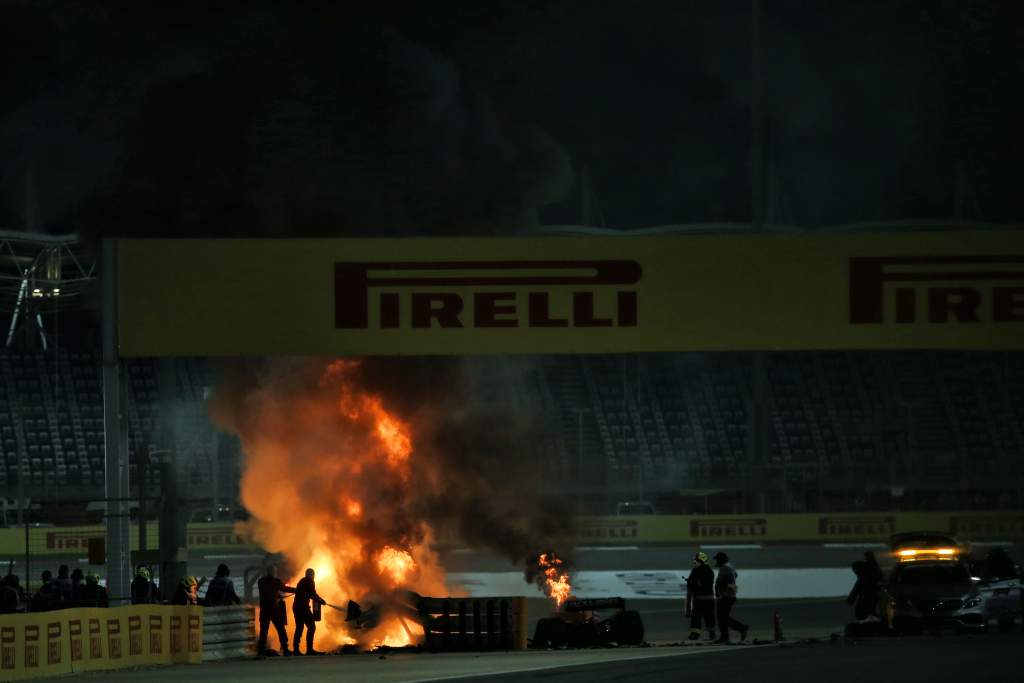
“[Although] it looked a big fire, those cars are carrying 100kg of fuel at that stage. I think if 100kg had gone up, it would have been a massive fire, so for me, that was a fire of a few kilos of fuel. Not 100 kilos.”
It was too small a fire for that, too big for it just to be from the filler pipe.
As with any accident there were multiple causes. But essentially a typical series of early corner skirmishes snowballed down the field.
Valtteri Bottas finding no grip at all from the outside front row was probably the initial trigger. For as he was swamped on all sides – with Hamilton, Verstappen and Sergio Perez immediately leaving him behind – he was pincered through Turn 1 by Daniel Ricciardo to his left, Alex Albon to his right.
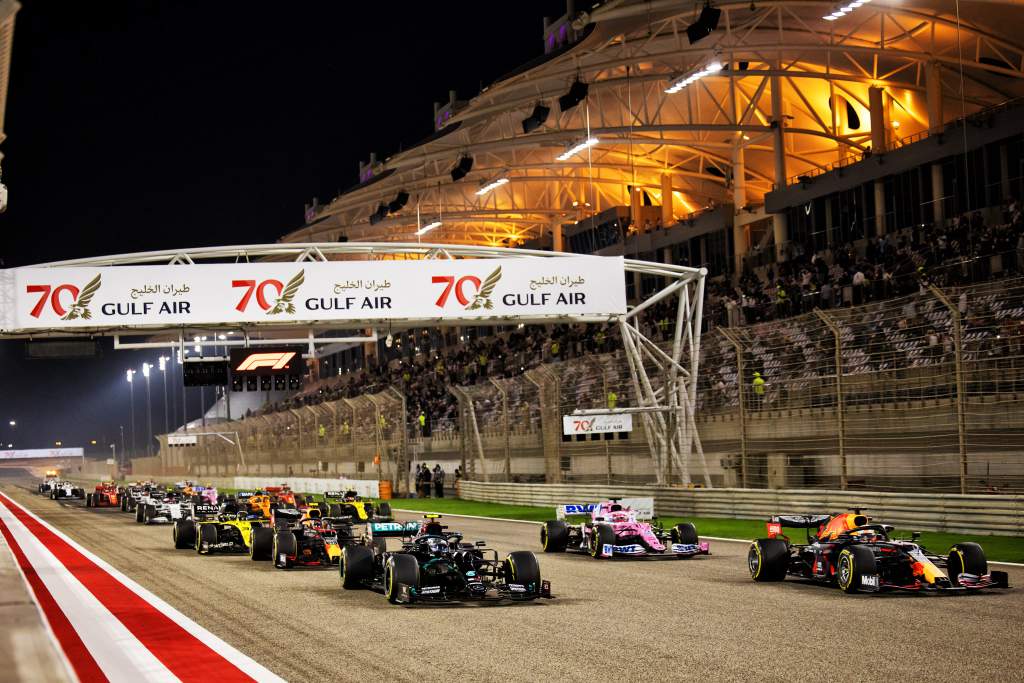
His backing off to avoid being snagged created a small concertina behind, involving the two Ferrari drivers, Charles Leclerc coming out OK, Sebastian Vettel’s momentum checked so that he was side-by-side with Carlos Sainz Jr as they went through Turn 3.
Their tyre-rubbing slowed them, Kimi Raikkonen veering left onto the run-off to avoid the back of the Ferrari, Kevin Magnussen moving right.
Grosjean, just behind Magnussen, moved further right, not seeming to realise Daniil Kvyat’s AlphaTauri was partly alongside. Everyone was still accelerating through the gears and as the Haas was flipped over Kvyat’s front-left wheel, Grosjean had just changed up to seventh.
There was precious little distance between there and the metal barrier, which was at an angle of around 30-degrees. A doubtless horrified Grosjean had just enough time to stand on the brakes. Thick black tyre lines led up to the impact scene.
With a fireball behind them, the cars went past the second safety car line just after that turn in the order of Hamilton, Verstappen, Perez, Albon, Ricciardo, Bottas, Pierre Gasly, Esteban Ocon, Lando Norris, Leclerc, Antonio Giovinazzi, Sainz, Magnussen, Vettel, Nicholas Latifi, Raikkonen, George Russell, Kvyat and Lance Stroll (who’d been off the road on the exit of Turn 2).
That would become the grid for the restarted race as Grosjean was checked over at the nearby BDF Military Hospital.
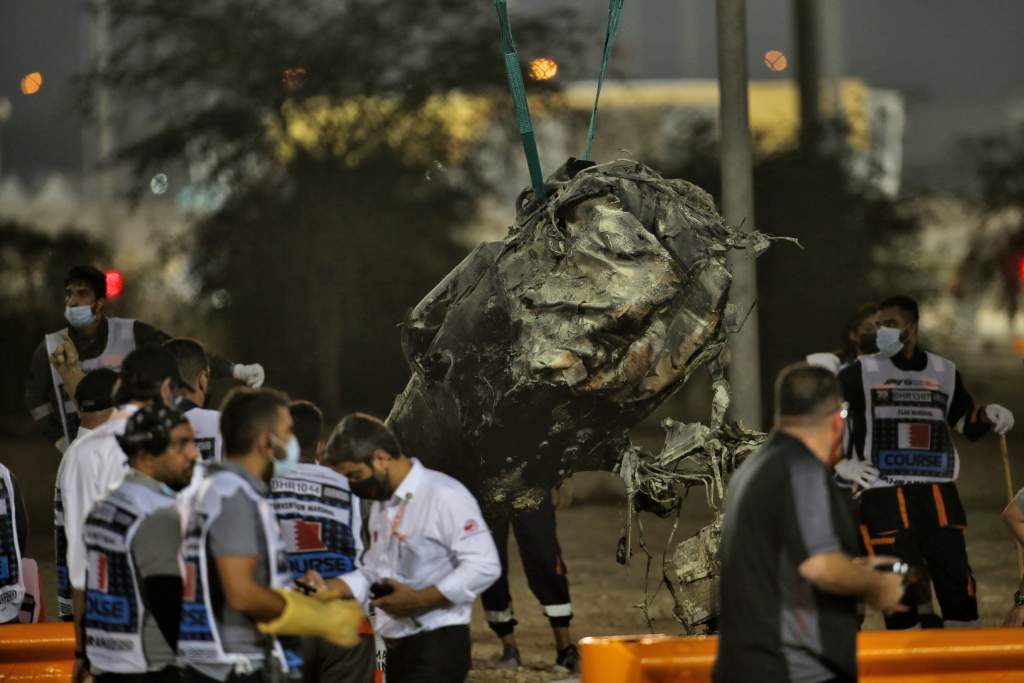
“Anything can happen with these cars,” said Hamilton reflecting on the accident.
“It definitely wasn’t easy to get back into the zone, into race mode, but the race goes on and that’s what we’ve got to do. Head down, otherwise this guy [Verstappen] is going to beat me.”
It was fully dark now as Hamilton took off into the lead again. Verstappen’s Honda again wasn’t great off the line and he was challenged hard into Turn 1 by Perez but managed to prevail.
That was the foundation of the race for the top three positions. Bottas picked up a slow puncture from debris up to Turn 4 but that wasn’t immediately apparent and it was lost in the general mayhem of another incident – as Stroll, who’d suffered a moment through the fast Turns 6-7, was flipped upside down at Turn 8 by an errant Kvyat trying to go for an optimistic move up the inside.
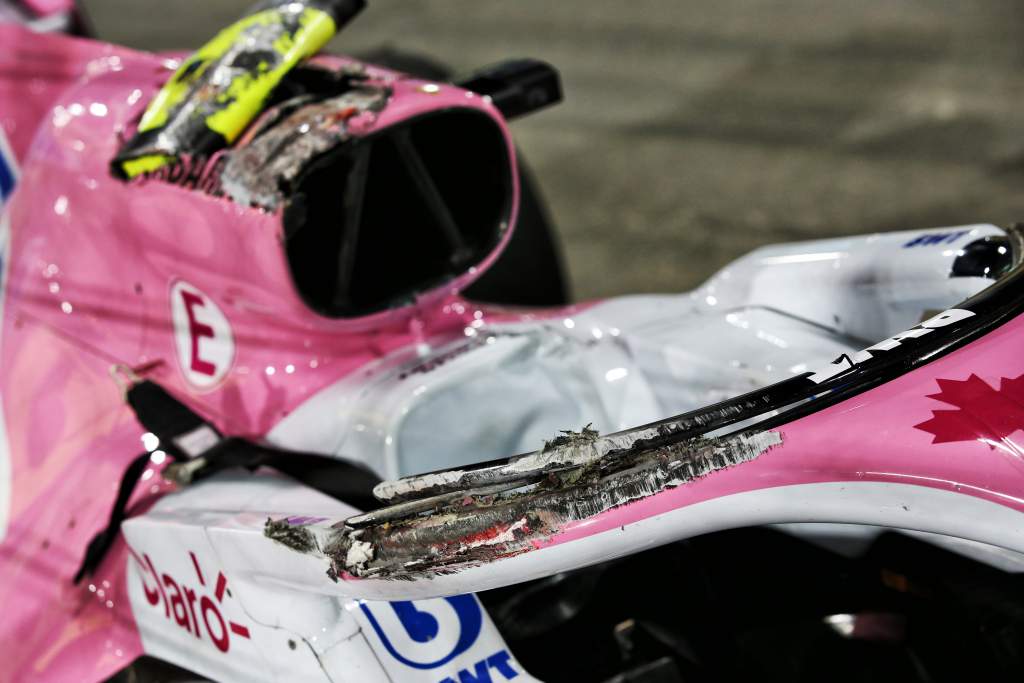
Lance crawled from underneath, unharmed but his day done. The safety car circulated for seven laps while the mess was cleared.
Verstappen did a great job of anticipating when Hamilton was going to gun it on the restart up to the final corner, but the Mercedes’ grunt was enough to leave the leader unchallenged as racing finally got properly underway.
Bottas was now down near the back, having been forced to pit for the puncture. He’s been like a debris magnet of late.
“I’ve been feeding this black cat that comes round to my place in France,” he said. “Maybe it’s that. I’m going to stop feeding him.”
He was now on a set of hards, hoping to run to the end. But he wouldn’t. The degradation of everyone’s left-rear was too high for that and this would be a two-stop race for almost everyone, as is standard around here.
That high degradation defined the particulars of the competition between Hamilton and Verstappen as they quickly pulled away in a race of their own, leaving Perez in a secure no-man’s land third.
“I wish we could have been more aggressive with the strategy” :: Max Verstappen
The seven-lap safety car period had pulled the race away from an ideally-spaced three-stop towards a compromised two-stop, with a lot of tyre management required by the driver.
So high was the degradation rate that the undercut was going to be very powerful, with new tyres worth around 3s over those coming towards the end of their life.
Almost everyone had started on the mediums and was trying to avoid the soft which had surrendered after as little as four laps on Friday.
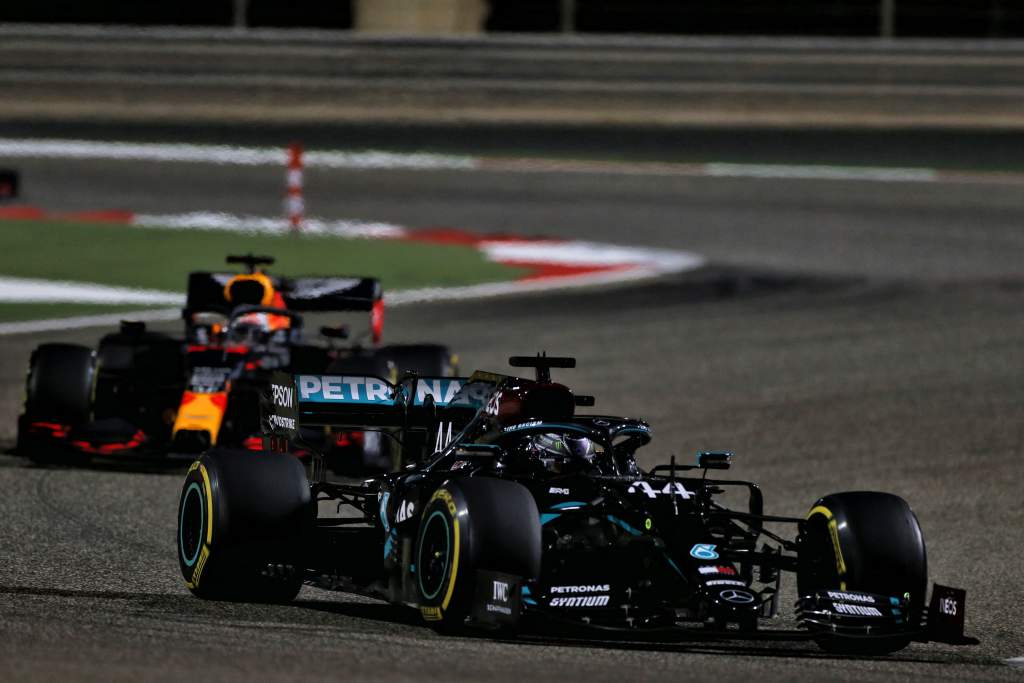
The challenge for Hamilton was to get the gap over Verstappen out to around 4s by the time of the first pitstop window but without overworking the tyres. Perfect Hamilton territory.
The Red Bull was just that bit harder on its tyres than the Mercedes, so Verstappen really could have done without that safety car period, as he could have planned around a three-stop, with the shorter stints that entailed.
As it was, the field still hadn’t spread enough for a gap to drop into before his tyres began getting towards the end of their life.
Hamilton had the lead out to just under 4s on the very lap that there was for the first time a gap to drop him into – and that’s when Mercedes brought him in, on lap 19 of 57.
Calling that right was the key to all that followed, with Verstappen always chasing, trying to make something happen, but Hamilton always in control.
“I wish we could have been more aggressive with the strategy,” rued Verstappen afterwards. “I mean they were just bit quicker than us and even if we gambled we were so far ahead of the others we would still have been second.”
“Yeah, we’ve just talked about it,” said Christian Horner. “If we’d pulled the plug earlier we’d have pitted into traffic.
“I’m not sure what else we could’ve done. They had the pace to have been able to cover us.”
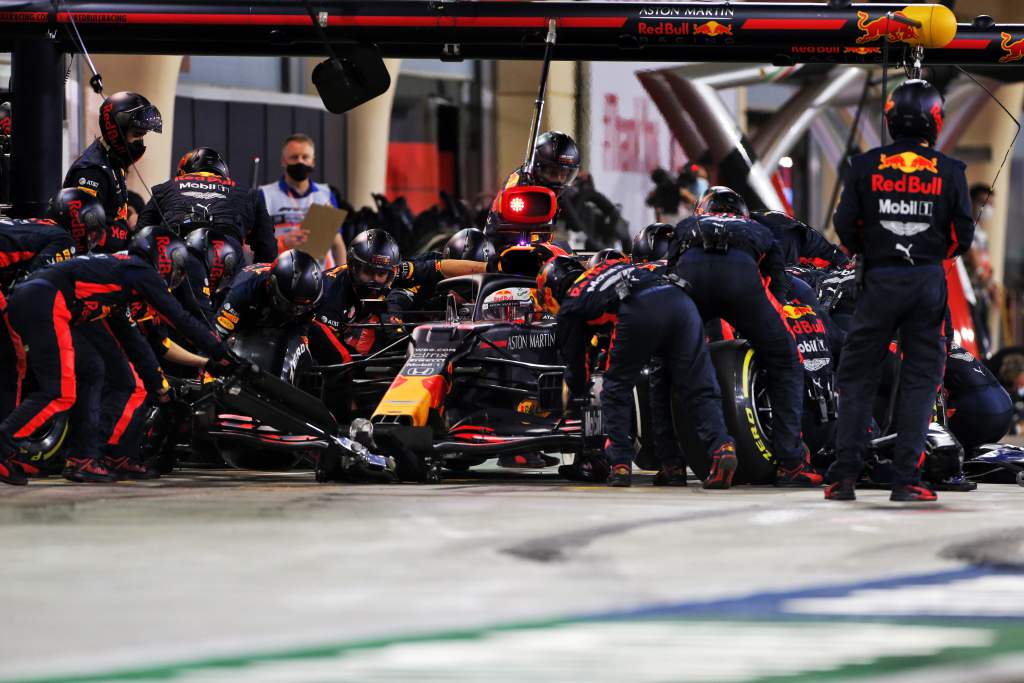
Red Bull had fitted Verstappen with the hard, with Hamilton on the medium. But it made little difference. Both tyres had to be driven in a way that prevented the thermal deg getting into a runaway state and that pace was similar on either hard or medium.
Even the tyre preservation skills of Perez couldn’t change those basic physics and he was around 10s adrift of the lead duo by the time of the first stops.
He was, though, keeping the gap back to Albon’s Red Bull consistent. They pitted from third and fourth on laps 20 and 19 respectively, and in many ways this was a repeat of the battle up ahead, with Perez in the Hamilton role, Albon that of Verstappen.
Adrift of Albon, the Norris-Ocon-Sainz-Ricciardo McLaren/Renault mash-up was close, with Gasly’s AlphaTauri hanging off the back of it.
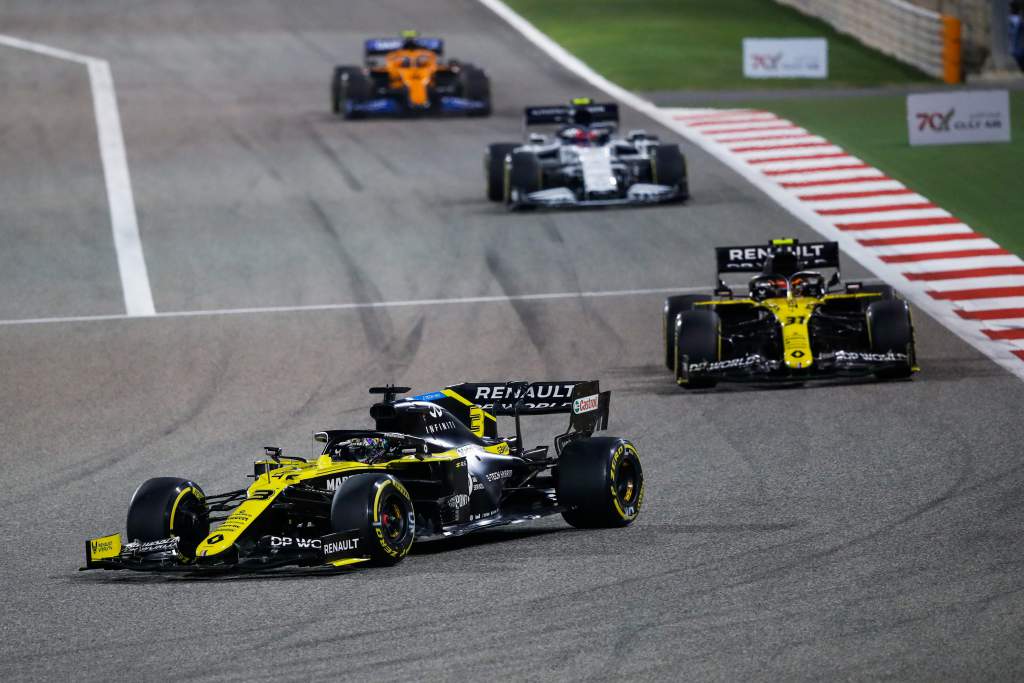
A variety of strategies would play out here. Renault pulled the undercut plug first, with Ricciardo and Ocon on laps 16 and 17. Norris responded to the Renaults and remained ahead of them – but Sainz went longer, despite being on the softs.
This was a remarkable performance from Sainz after having started back in 15th because of the rear axle seizing and spinning him out in Q2.
With nothing to lose, he went counter to everyone by starting on the softs and somehow nursed them to last longer than everyone’s mediums – and continued to post competitive times on them after they’d stopped.
Verstappen’s final hope of an against-the-odds win was a safety car that would wipe out Hamilton’s gap. He would get half his wish…
It dropped him an initial place to Ricciardo but after finally pitting on lap 21 and getting onto mediums Sainz was able to pick off both Renaults and leave them behind to their own internal battle. The McLarens were just better on the tyres – and therefore faster – on race day than the faster-qualifying Renaults.
Gasly played it differently again and, having switched from his initial choice of mediums onto the hards for the restart, eked out a first stint of 25 laps.
This lost him around 10s to the back of the McLaren/Renault squabble, but on his second set of hards he was planning to get through on one-stop. This would leapfrog him past them as they all made their second stops and he didn’t.
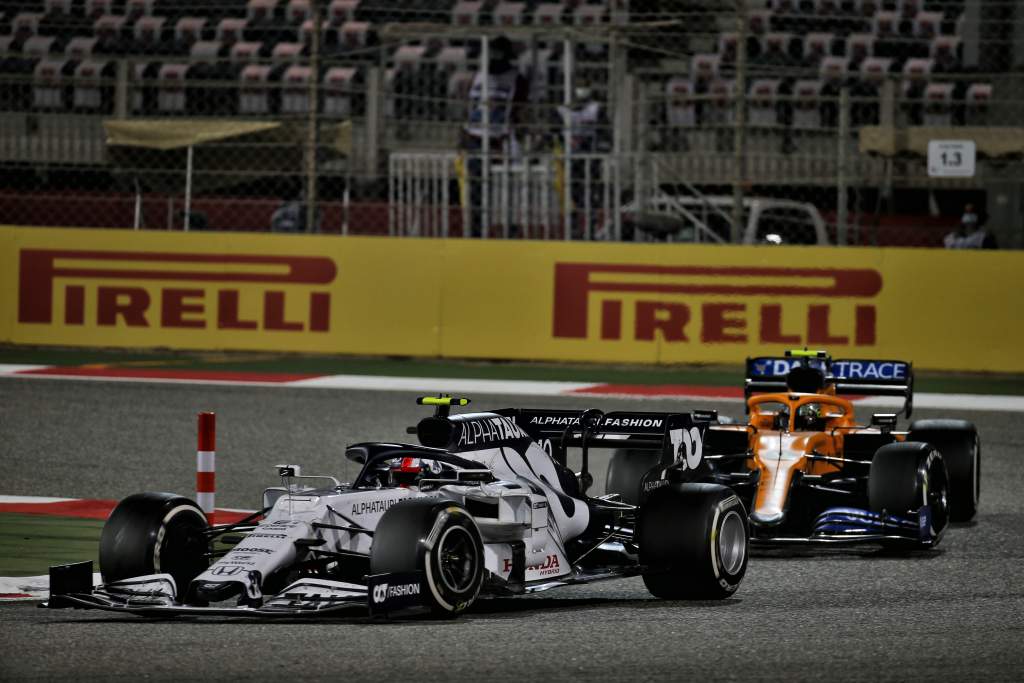
Gasly would be hanging on in the late stages as they came back at him. That was the way AlphaTauri had chosen to throw the dice. The McLarens got past him before the end, the Renaults didn’t quite.
Norris always remained ahead in the McLaren ranks but at Renault Ricciardo and Ocon passed and repassed until the former eventually stamped his authority on the matter and pulled away.
Up to the second stops Red Bull brought Verstappen in from just under 6s behind and put him on the other set of new hards he’d saved.
Mercedes responded with Hamilton next lap and fitted his sole set of hards. The gap ebbed and flowed between them but only around that crucial 4s gap.
In a tyre life race, Verstappen was never going to gain the upper hand without outside help.
With more than a pitstop’s-worth of gap over Perez with 11 laps to go, Verstappen made a third stop, had a fresh set of mediums fitted in order to set the fastest lap. On newer tyres, his final hope of an against-the-odds win was a safety car that would wipe out Hamilton’s gap and leave the Mercedes on old tyres for the restart. He would get half his wish…
There was a late safety car – and it came about three laps from the end as Perez’s Mercedes engine let go in flames, third place literally up in smoke.
But the reason it was only half a chance for Verstappen was the safety car would stay out until all but the last few hundred metres of the race. Victory number 95 for Hamilton, from Verstappen and Albon. The latter’s result was good, albeit fortunate and before Verstappen’s third stop he’d trailed him by over half a minute.
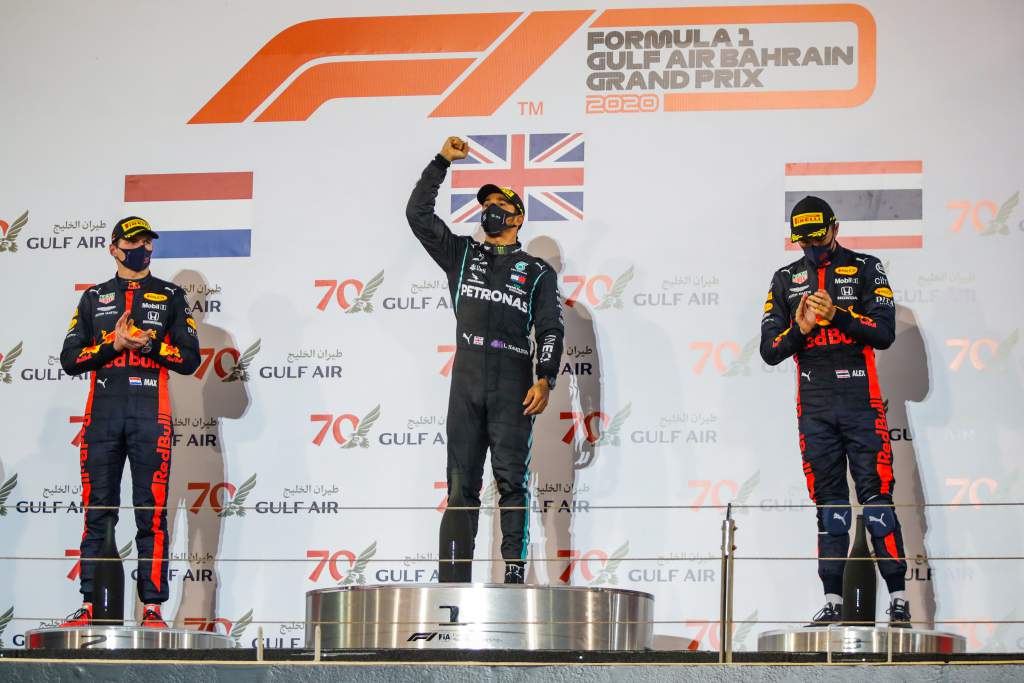
The fourth and fifth of Norris and Sainz bumped McLaren backed up to third in the constructors’ championship. Gasly yet again delivered a great performance with sixth, perhaps rescued by the safety car from being devoured by Ricciardo – though maybe not, because a part of the Renault’s floor had become detached and was sparking wildly just as the safety car came out.
Bottas had picked off Ocon for eighth in his three-stop recovery drive (he’d picked up another puncture!) and Leclerc took the final point.
Oh yes, Ferrari did take part in this race, Leclerc bullying past Vettel on the post-Grosjean restart, much to Vettel’s fury.
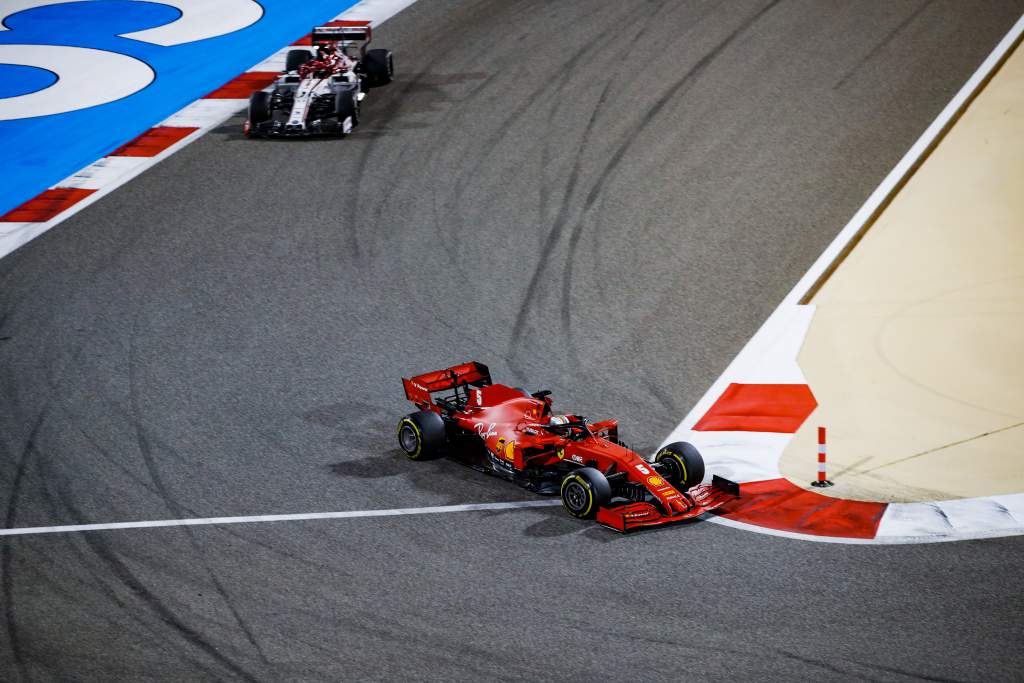
The Ferrari was just way too hard on its rear tyres and lacking in power on a power-rewarding track to maintain its recent form.
Kvyat’s Forrest Gump-style race – he was involved in the two major events from close quarters – gave him 11th, his race scuppered by the 10s penalty in the pits for the Stroll incident.
Russell’s Williams won ‘Class C’, with Latifi also beating both Alfas home. Magnussen got the surviving Haas to the end last.
So a fairly routine sort of race concluded what had been anything but a routine event.
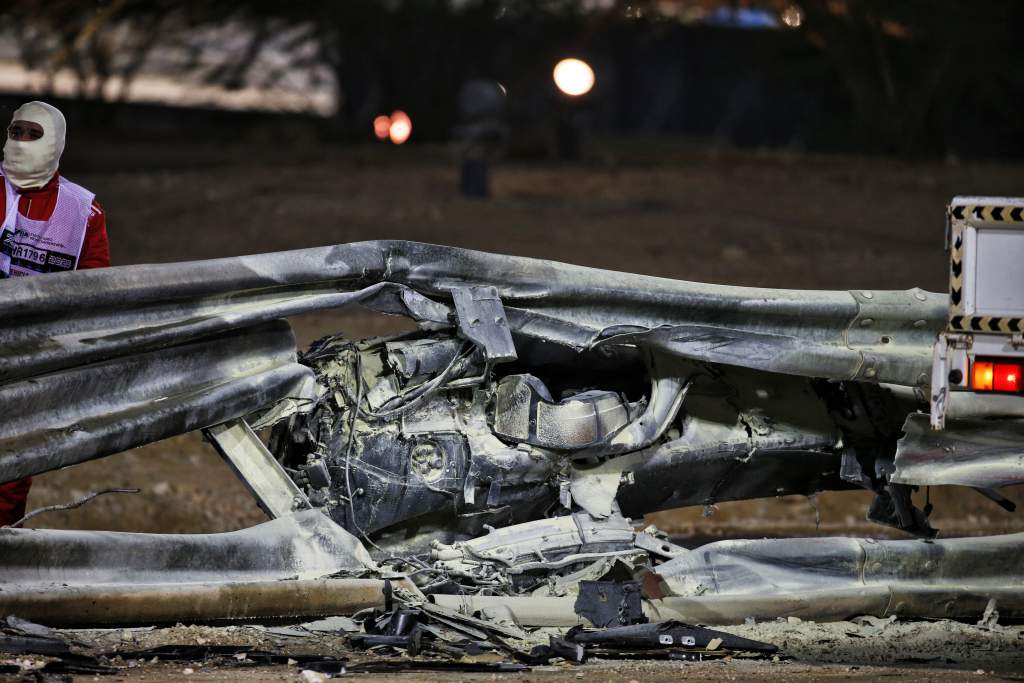
In less technologically-advanced times, F1 would have been mourning the loss of one of its own. Let’s just reiterate: Grosjean crashed through a metal barrier at 137mph, was engulfed in a fireball – and walked away.
Mercedes won the race. Mercedes was the inventor of the cockpit halo and Grosjean has the option of racing again – as early as next weekend.


